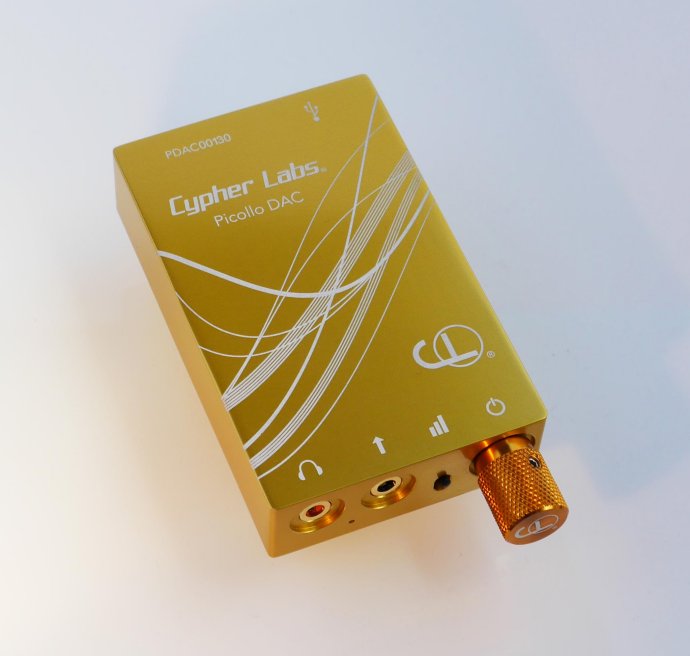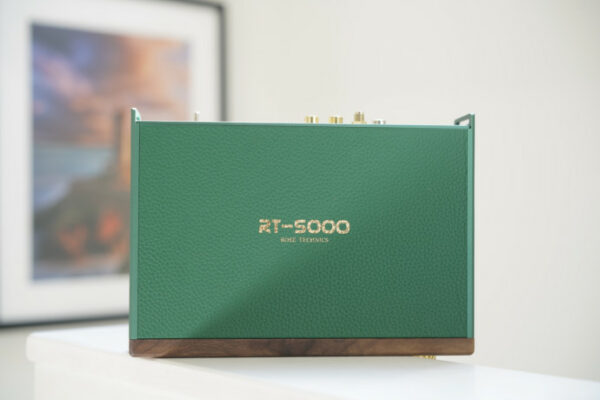Disclaimer: We got the Cypherlabs Picollo DAC a few weeks ago right after they announced its release. Headfonia has covered every single CL product and I’m proud of that. Ok, I’m lying; we still need to do the Prautes, if only it wasn’t so heavy!
Android DAC
Put the Picollo and PDAC together on a table and you wouldn’t be able to distinguish which one is CypherLab’s latest creation. They look as good as identical apart for some text on the front of the unit. All the rest looks the same. From the outside that is because on the inside it’s a whole other story. I advise everyone to read the Picollo review first as we won’t go into as much details this time. Basically because a lot of things are the same.
Yes, the PDAC is also analog amp (3.5mm input) but there’s more to it than the eye reveals. The PDAC, as the name says, is also a DAC. But not just any DAC: it was developed especially for Android devices yet it works on PC too. CypherLabs chose a simple Texas Instruments PCM2704 as DAC chip and it’s limited to 32, 44.1, 48 kHz @ 16-Bit sample rates. I was somehow surprised with the choice of that DAC and I talked to Cypherlab’s CEO Mr. Maudlin about it: “The 16/48 DAC is there for all those existing Android devices. Almost all 500 million of them can only play 16 bit and with the AlgoRhythm Picollo DAC, they don’t need any drivers or apps so it is an easy plug and play”. Agreed, but still…
Besides it having a DAC inside it also uses op amps for the headphone output instead of the discrete design of the Picollo. The triode design of the original Picollo is not compatible with the DAC output, so they had to use op amps. That does result in some changes to the sound which I’ll get back to later. Like the Picollo there is a 3.5mm line in and a 3.5mm single ended headphone out. If you need balanced connections you’ll have to go to the other CypherLabs models.
The PDAC has a very large output spread that supports ultra sensative IEM’s and large headphones: low gain -12db, mid gain, high gain +11.5db. Both units are exactly alike in that way but the power they put out is different. Where the Picollo has more power for 32Ohm and 50Ohm headphones the PDAC delivers more at 300Ohm and 600Ohm. Both have less than 1Ω Output Impedance.
Output power PDAC Output power Picollo
160mW into 32Ω 200mW into 32Ω
90mW into 50Ω 100mW into 50Ω
60mW into 300Ω 35mW into 300Ω
30mW into 600Ω 10mW into 600Ω
Both units have a CNC machined aluminum enclosure with laser engraving. The PDAC measures 20mm x 53mm x 88mm (100mm with knob) which exactly the same as surprise surprise: the Picollo. The PDAC weighs 5 grams more than the Picollo (140grams) and also comes in three colors: Black, Silver and Gold.
The Lithium-ion UF103450P 2000mAH/3.7V type battery from Sanyo is used again but it doesn’t go as long with one charge. Where it did between 24 and 30 hours in the Picollo it will only do between 12 and 18 hours when used as Android DAC and between 16 to 24 hours when used as analog amp. Still more than enough and way more than a lot of the competitor’s units. The battery life time is one of the unique selling points of the CypherLabs gear and I can only applaud them for that. Of course you can charge the battery while the unit’s is being used as amp or DAC.
The Difference in sound
Using a Sennheiser HD650 or Beyerdynamic T70 with my Samsung S4 is not a good idea. Even with the volume maxed out I can’t get it loud enough and the quality is below acceptable. The PDAC is plug and play. Connect it to your Android phone with the supplied micro to micro cable and your problem is solved. I like the S4 headphone out a lot with IEMs and easy to drive headphones but I never imagined my S4 to sound this good.
Sound goes on after the click








ohm image
I can only imagine. The regular Picollo was phenomenal. Add the DAC and whoopee!
Headfonia_L.
Theorem still is the better unit but this is a mall DAC/AMP combo for Android with a really good amp
ohm image
That’s fine. For earphones, of course, the Picollo circuit is much better suited. But Theorem is quite the treat.
Ford
From my experience, turning the airplane mode on help eliminating the crack while using external DAC. I guess it has nothing to do with the DAC.
Headfonia_L.
Let me try that. thanks
Tony
would be really curious to see how this compares to the competition(android dac/amps)? ALO international+, JDS labs C5D, Headstage arrow 5G. Anything else in that price range?
Headfonia_L.
I never received the International+, the JDSLabs C5D can’t touch the PDac. PDac has a wider sound stage, smoother sound, more detail and a more musical open sound. I haven’t listened to the Arrow lately. HErus has a DAC that’s a lot better than the Pdac but the amp section of the Herus pretty much sucks while the amp section in the Pdac is the strong point.
Hope this helps!
Tony
nice thanks! How about the PDAC vs the original international? reading over your review of the international my impression was that you were a bit “meh” about it because of the price
Headfonia_L.
Mike would have to answer that I’m afraid.
digitldlnkwnt
OK easy on the Herus…it’s 1/4 the size of the PDAC Pick on someone your own size and price range 😉
Given the size and price difference plus room for more robust electronics, it’s plain to me the PDAC would be able to squeeze in a better amp section. Herus is really designed to be a swiss-army DAC that for less than 400.00 bux allows any amp to play DSD/DXD files.
Tibor
Hey, cool stuff you’ve got there 😉 This is what I am looking for and when I’ve seen the headline, I was so happy! Picollo with an Android dac! Yes! This is what I need, but then sadly, it’s not the same triode amp inside 🙁 Never mind, I really want to buy either this or International+, but you said you never received one, so you can’t help in this. This one has a better battery life, hmm, I really don’t know now, because I was already decided for International. Maybe I will wait until Christmas and see who will have a better offer 😀
Thanks for the review anyway! 😉
Headfonia_L.
my pleasure!
Tibor
I have one more question, I just want to know how many steps down is PDAC’s amp section compared to Vorzuge Pure ii? If Pure is 100%, how many % PDAC will have? Thank youuu 😉
Headfonia_L.
If the the Picollo amp = 100%; the PDAC amp is like 95%. And Nathan said this about the Pure ii: While I prefer the sound of the Vorzüge PURE II, Picollo’s
gain stage is better tuned to a wide variety of earphones, from the
most sensitive, to earphones that exhaust the outputs of some players.
So Picollo for IEMs is the winner 😉
Tibor
This is what is important for me, he prefers the sound of Pure ii. I don’t own any iems yet, I am very happy with my VK-1 and looking for an amp or amp/dac for them 🙂 Hmm will see, will see 😉
ohm image
I’ve not heard the Picollo DAC, but the regular Picollo is great. Chase Emory, a crazy-eared mate of mine, also likes the Picollo. He tends to agree that Pure II is tip top. For me, there is no substitute for the minute, but wonderful patina the PURE II introduces, but the gain stage is better on the Picollo, hands down.